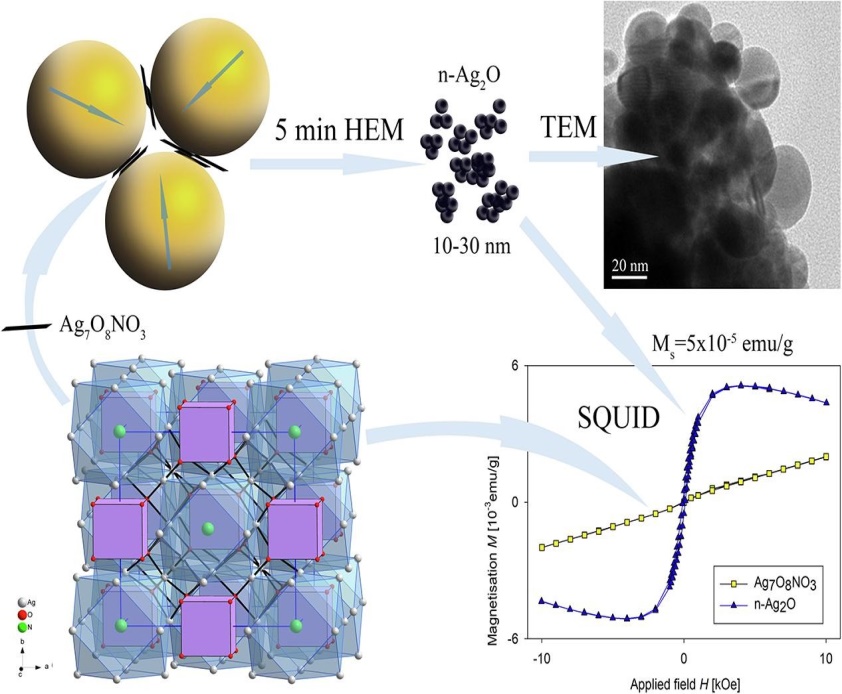Preparation and research on the properties of Ag2O nanocrystals
Investigators: M. Škrátek, P. Billik
Ag2O nanoparticles are an exceptional material that has great potential for biomedical applications due to its high cytotoxicity. Although the wet chemical synthesis of Ag2O nanoparticles is a particularly simple preparative technique, it is very difficult to obtain Ag2O in a concentrated state because the precipitation rate is difficult to control. Mechanochemical preparation is offered as a sustainable method for the production of various nanocrystalline materials. We focused on the first highly oxidized silver compound ever prepared, with the empirical formula Ag7O8NO3. This compound is known for its superconducting transition at around 1 K, metallic conductivity and low thermal stability (400 K). We have observed an exceptional synthesis of nanocrystalline Ag2O obtained by mechanochemical decomposition of Ag7O8NO3. Ag20 nanocrystals formed after 5 min of high-energy milling (HEM) exhibit aggregated and spherical morphology with crystal size in the range of 10-30 nm. The as-prepared nanocrystalline Ag2O exhibits weak ferromagnetism with a saturation magnetization of 5×10-3 emu/g. The existence of paramagnetism or weak ferromagnetism is assumed in the formation of silver (cation) vacancies and oxygen vacancies or also in the non-stoichiometric oxidation of the surface of silver nanoparticles. In contrast to wet chemical synthesis, our method allows for the preparation of virtually solid state and offers recycling of both metallic silver and AgNO3 solution.

Illustration of the synthesis of nanocrystalline Ag2O obtained by mechanochemical decomposition of Ag7O8NO3 (left part of the figure). TEM image of the n-Ag2O aggregate consisting of spherical nanocrystals (top right) and the obtained M(H) dependences of the starting and synthesized material (bottom right).
Related projects: VEGA 2/0141/21
The result was achieved in collaboration with the Faculty of Materials Technology of the STU in Trnava, the Institute of Inorganic Chemistry of the Slovak Academy of Sciences, the Institute of Materials and Mechanics of Machines of the Slovak Academy of Sciences, the Centre for the Use of Advanced Materials of the Slovak Academy of Sciences, the Centre for the Use of Advanced Materials of the Slovak Academy of Sciences and the PriF UK.
Publication in CC journal:
- ŠKRÁTEK, Martin – ČAPLOVIČOVÁ, M. – ČAPLOVIČ, Ľ. – PETRISKOVÁ, P. – ŠIMON, E. – RAKOVSKÝ, E. – BILLIK, Peter. Ag2O nanocrystals prepared by mechanochemical decomposition of Ag7O8NO3. In Materials Letters, 2023, vol. 348, art. no. 134680. ISSN 0167-577X. (3.0 – IF2022) Q2
 Contacts
Contacts Intranet
Intranet SK
SK